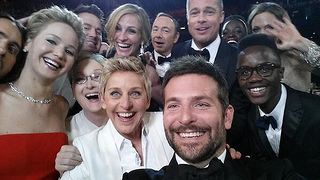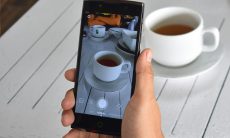What was the most memorable moment of this year’s Oscars? Lupito Nyong’o’s amazing, A+ speech? The pizza delivery? No. It was Ellen’s celebrity selfie gone viral. It was a commercial success. When I wrote the first version of this post, almost a month ago, I wanted to make a point about how traditional television advertising would someday disappear, replaced by more subtle and creative innovations in marketing. This was after I’d sat through 15 uninterrupted minutes of commercials while waiting for George Clooney to appear on one of the morning talk shows.

I’ve been so spoiled by Netflix, HBOGO, Amazon Prime, and the easy availability of Web clips from my favorite TV shows that I rarely turn on the TV anymore. I do all of my “viewing” on my iPad – and it’s mostly commercial-free. As I sat through that lengthy block of commercials, I wondered: “Why do people put up with this?” There will come a point when they won’t. Luckily for marketers, there are more palatable forms of advertising, as Ellen’s selfie demonstrates.
If only Bradley’s arm was longer. Best photo ever. #oscars pic.twitter.com/C9U5NOtGap
— Ellen DeGeneres (@TheEllenShow) March 3, 2014
Mass media has taken a hit over the last several years, and undoubtedly old and new forms of advertising will co-exist for some time. But viewing patterns are changing quickly, even as old media companies cling to the 30-second spot. Disney, for example, just signed a deal with Dish Network to stream ABC content. The agreement, however, requires the satellite service to disable its ad-skipping technology.
Eventually, consumers will win. As I sat patiently through those 20 or so commercials (none of which I can remember), I thought: “This is really stupid.” I can watch a George Clooney interview anytime I want on the Web. I don’t need to waste my time watching advertising that doesn’t reflect who I am or what I do for fun or work.
There are just too many options to watch favorite shows without the commercials.
Consider these recent developments:
- Netflix posted better than expected earnings last quarter and announced that it has 44 million subscribers. That’s about the same number of people that watched the Oscars, but Netflix is increasing subscribers at a rate of 2 million per quarter.
- Netflix doesn’t release its viewership numbers, so it’s hard to say how any one of its shows compares to ABC’s Oscar extravaganza. Good Morning America has more than 6 million viewers, for example. Still, estimates of how many people watched the second season of House of Cards, their original series, have ranged from a few hundred thousand to more than 5 million. And the streaming service won real credentials after the series won a Golden Globe.
- More people are watching TV on mobile devices, and they are spending more time on digital media than watching TV. Eventually, advertising dollars will follow that trend and shift from TV to digital, according to Business Insider. Be sure to check out the great charts in this article.
If marketers want to generate awareness and leads, they’re going to need to get very creative. Which brings me back to Ellen’s selfie. The marketing innovation behind this is nicely summed up in this lead paragraph from a WSJ story:
“Samsung Electronics Co. spent an estimated $20 million on ads to run during breaks in the Academy Awards broadcast on Sunday night. But Samsung may have got more promotional mileage from Oscars host Ellen DeGeneres during the show itself.”
Of course, this kind of marketing win isn’t without precedent. Oreo achieved a similar result by quickly reacting with a clever tweet to last year’s Super Bowl blackout.
Nevertheless, these events occur just once a year, and brands put enormous resources behind them. What about the small moments of every day life? How do we innovate marketing when mass media disappears, and consumers are free to choose only what they want to see and hear?
In my mind, it comes down to story – not your brand’s, but the consumer’s. How does your product or service fit into the day-to-day experience of your buyer?
Samsung didn’t just pay for product placement. It paid for a story. We’ve all taken the group selfie, and not only can we relate to the experience, we can even imagine ourselves in the company of celebrities.
So is television advertising over? No, but I think we’re going to see a lot more advertising dollars flow toward integrating product with story and far fewer 30-second spots.







